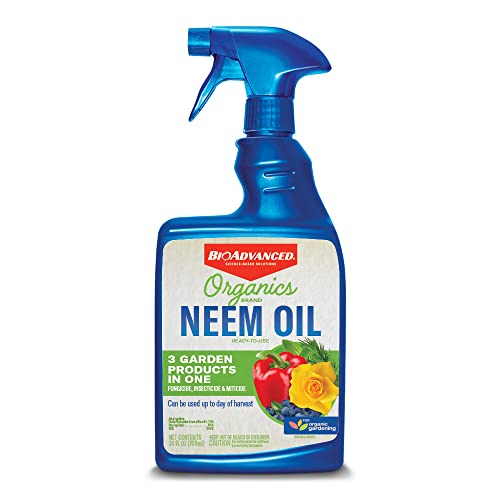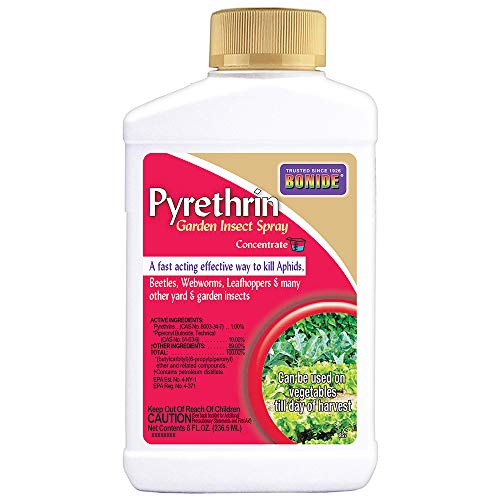What are woolly apple aphids? How to spot and control these troublesome pests
Discover how to get rid of woolly aphids on apple trees and other host plants
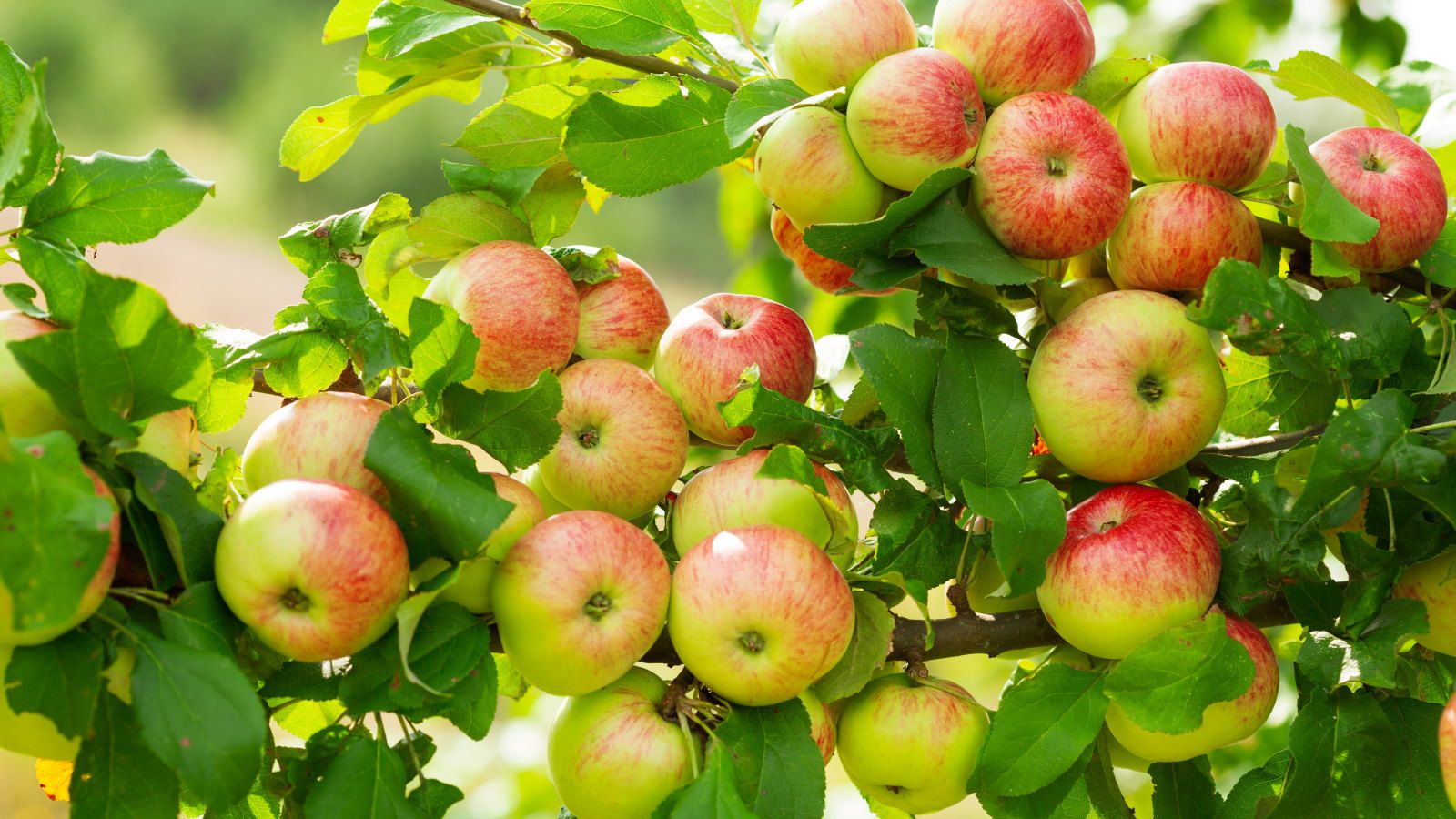

The woolly apple aphid (Eriosoma lanigerum) is a serious pest of apple trees, other fruit trees, ornamental trees, and some popular backyard shrubs. The pests cause many issues for the hosts as they feed on sap, and the signs of damage show on branches and roots.
Woolly apple aphids feed ferociously and can go through many generations in a year. Their presence is often signified by the distinctive cotton-like fluff they produce, and symptoms including curling leaves and swellings.
Don’t let the fear of woolly aphids put you off any plans of planting apple trees, however, as I spoke to a fruit tree expert about the signs to look for and how to get rid of woolly aphids on apple trees.
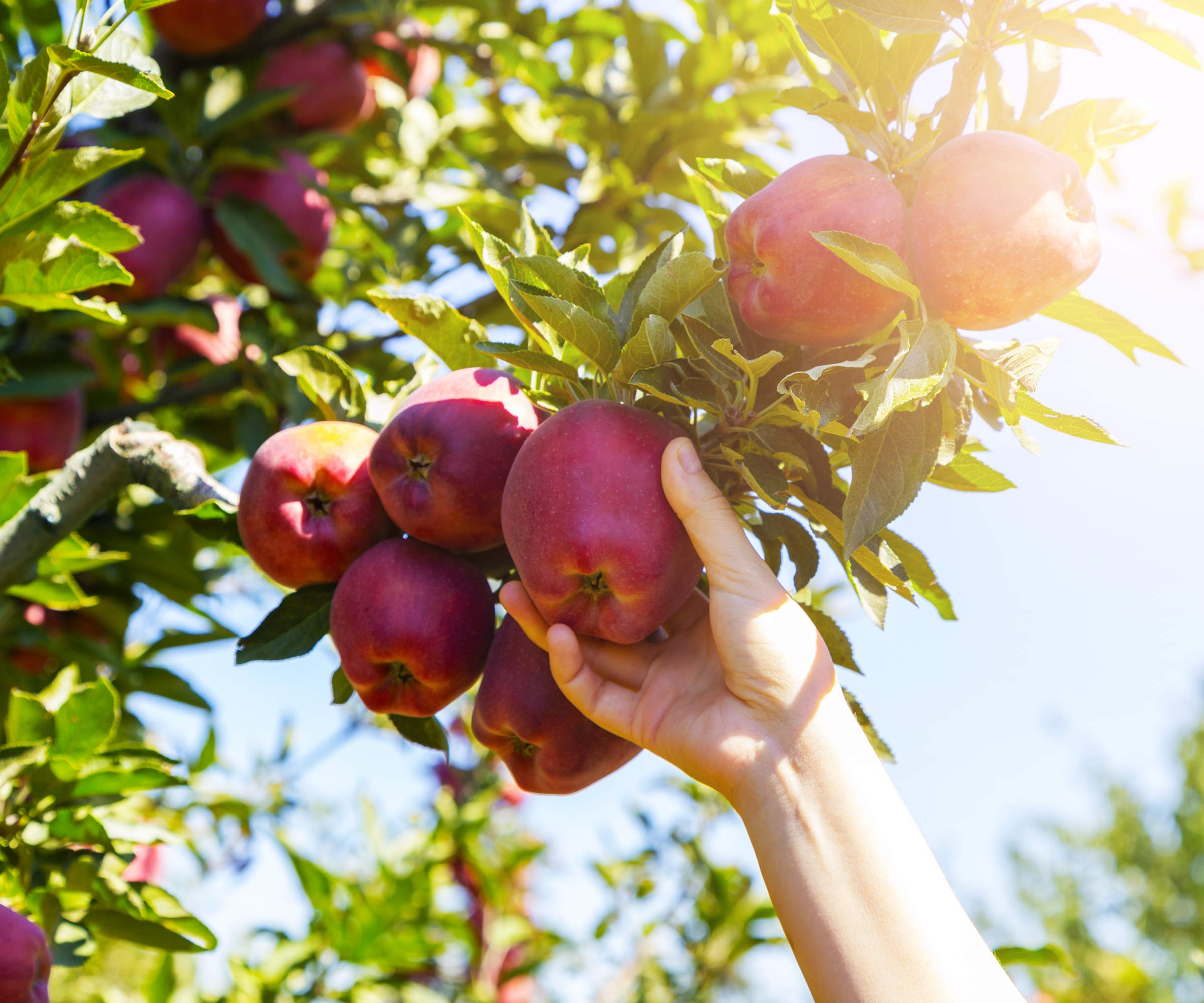
Woolly apple aphids can affect fruit production
What are woolly apple aphids?
Woolly apple aphids are small black aphids that suck sap from bark, stems, and leaves and can cause infected lumps. It is not just apple trees that woolly apple aphids are troublesome pests of, as they also feed on crab apple trees, pear trees, elm, quince, ash, hawthorn, cotoneaster and pyracantha.
The woolly apple aphid life cycle
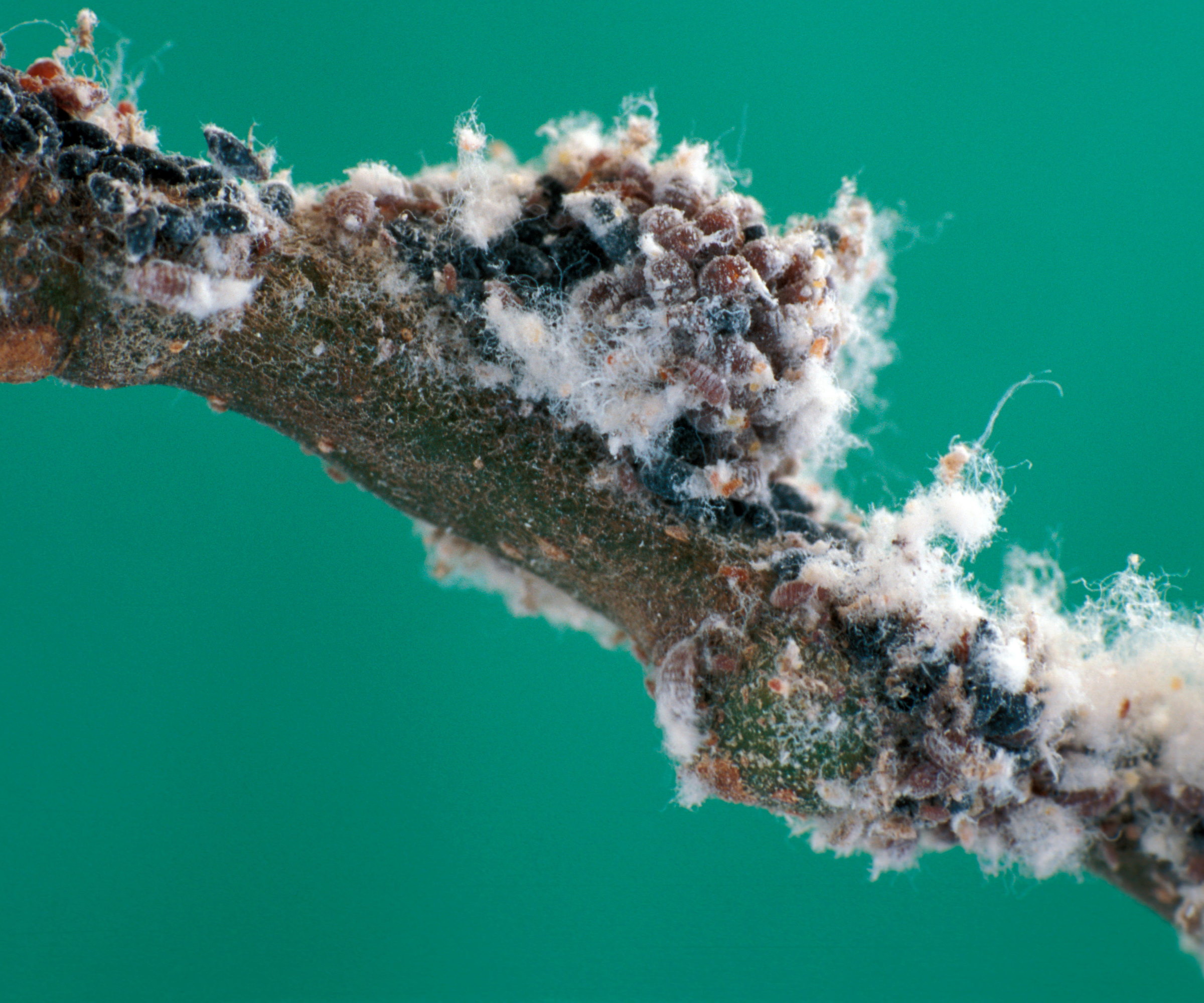
Woolly apple aphids produce fluffy white masses
Years ago, woolly apple aphid eggs and nymphs traditionally overwintered on elm trees in cracks or under loose bark. In spring, the eggs hatched and fed on elms before migrating, either developing winged generations or being carried by the wind to spread to apple trees. They fed vociferously and produced many generations before migrating back to elms to overwinter eggs and start the cycle again.
In the absence of nearby elm trees, aphids could overwinter on other host plants and infest the roots of plants year-round. Nowadays, given the rapid disappearance of elms, woolly apple aphids have evolved to often remain on apple trees throughout the year, either in egg form in the bark or aphids surviving year-round on the underground roots. They now start feeding on apples or other hosts earlier in the year and can produce multiple generations on a host plant.
Woolly apple aphids have a reddish or dark purple body between 1.5 and 2.5 mm in length and the bodies are hidden under a wool-like waxy covering. At the nymph larval stage, they have a dark brown or reddish body and range from 0.6 to 1.3 mm in length. Woolly apple aphid eggs are brown in color and elliptical in shape.
Woolly apple aphid damage - what to look for
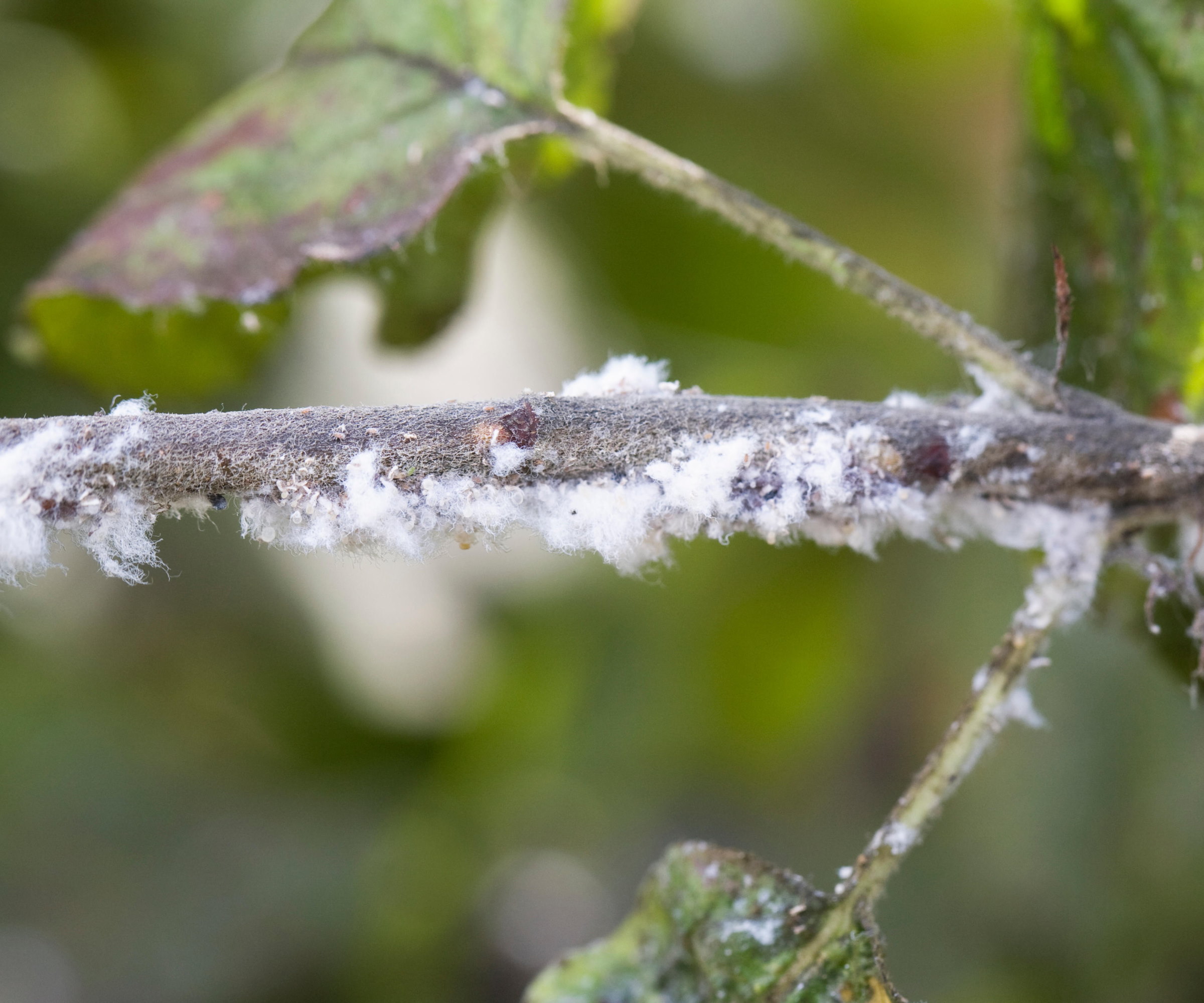
Woolly apple aphids affect branches and roots
Woolly apple aphids cause damage from spring to early fall as the nymphs and adults feed extensively on the trees. Colonies can reach large numbers as the pests produce new generations throughout the year.
Susan Poizner, founder of Orchard People, warns: ‘Woolly apple aphids cause damage by feeding on the tree’s sap, leading to galls or swellings on the branches and roots. This can result in stunted growth, leaf curling, and a general decline in tree health. Severe infestations can weaken the tree and reduce fruit production.’
The production of galls will not only disfigure trees but the growths can be split open by winter frosts and become entry points for fungal diseases, such as apple canker. The galls are often easiest to identify when pruning apple trees in winter.
What is harder to spot is the damage to the tree’s roots, as the pests can cause galls on the roots which may ultimately stunt the tree’s development or kill young apple trees. Plants with affected roots may have yellow foliage.
Susan explains how the presence of pests can be easily identifiable. She says: ‘Woolly apple aphids are easy to spot by the cotton-like, fluffy white masses they form on the leaves, branches, and sometimes the trunk of apple trees.’ The sticky residue can cover leaves and fruits and the aphids also produce honeydew and black sooty mold - all of which can be issues when you harvest apples as the substance sticks to clothing.

Susan is an urban orchard-ist, ISA Certified Arborist, and the author of two fruit tree care books, Growing Urban Orchards, available at Amazon and Grow Fruit Trees Fast, also available at Amazon. She is the creator of the award-winning fruit tree care training website Orchard People and trains global fruit tree growers through her online courses
Woolly apple aphid control - what to do
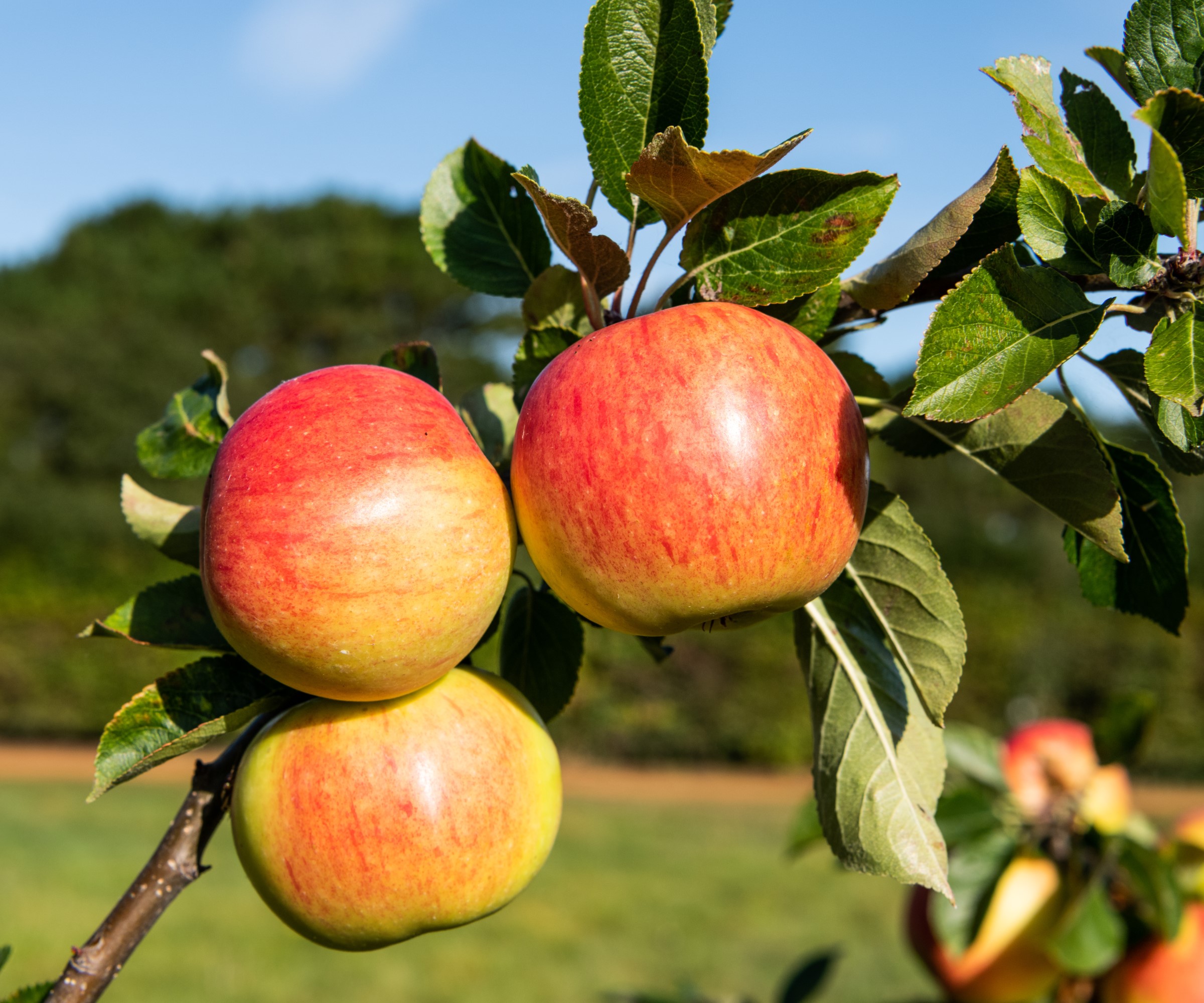
Combatting woolly apple aphids is best done early in any outbreak
Proactive measures can be taken for woolly apple aphid control and reactive woolly aphid apple tree treatments are available if you spot outbreaks on susceptible plants. Regularly monitor any vulnerable plants early in the season so measures can be implemented quickly for the best effect.
Some apple rootstocks are resistant to woolly apple aphids and certainly worth considering when planting apple trees. These include the Malling-Merton (MM) rootstocks, which are highly resistant and available in most regions.
Companion planting is a fantastic form of natural pest control that can manage the populations of woolly apple aphids. ‘Encouraging natural predators like ladybugs and parasitic wasps can help manage populations so make sure you have a wide range of flowering plants, including native plants, near your fruit trees,’ recommends Susan Poizner.
The fruit tree expert also suggests using horticultural oils and insecticidal soaps as woolly aphid apple tree treatments. These can be applied directly to any infestations to reduce the numbers seen above the ground, however, there is little that can be done to control infestations in the roots of apple trees.
That is the same for insecticides that may control woolly apple aphids, they can target above-ground pests but not the roots. Insecticides should be the last step in dealing with pests, however, there are both organic sprays, such as pyrethrin, and synthetic insecticides that can help to control populations of woolly apple aphids.
Shop woolly aphid apple tree treatments

A spray that controls aphids, mealybugs, mites, leafhoppers, psyllids, scale insects, thrips, whiteflies and other listed pests.
FAQs
What are the natural enemies of woolly aphids?
The top natural predators of woolly aphids are ladybugs, lacewings, and earwigs. You can attract ladybugs to your yard, and other beneficial aphid predators, by planting pollen-rich plants and aromatic herbs, providing insect shelters, and not using pesticides or insecticides. A few of the best flowers for attracting ladybugs and lacewings include marigolds, geraniums, and nasturtiums.
What is the best homemade spray for woolly aphids?
The top homemade bug spray for woolly aphids is a soapy water solution. A DIY aphid spray can be made by mixing a couple of teaspoons of liquid dish soap with water to spray directly onto the aphids.
Apple trees are susceptible to many pests and diseases, which can strike at different stages of the season. One particular issue can be fruits dropping from trees prematurely, which can be down to codling moth or apple sawfly. Codling moth bore into the apple’s core and can cause fruits to drop early. These pests can also be combated by companion planting to attract the moth’s natural predators.
Sign up to the Homes & Gardens newsletter
Design expertise in your inbox – from inspiring decorating ideas and beautiful celebrity homes to practical gardening advice and shopping round-ups.

Drew’s passion for gardening started with growing vegetables and salad in raised beds in a small urban terrace garden. He has worked as a professional gardener in historic gardens and specialises in growing vegetables, fruit, herbs, and cut flowers as a kitchen gardener. That passion for growing extends to being an allotmenteer, garden blogger, and producing how-to gardening guides for websites. Drew was shortlisted for the New Talent of the Year award at the 2023 Garden Media Guild Awards.
-
 Ina Garten's storage pantry is an insightful window into all of the best cookware used by the chef – and it's easy to recreate on your kitchen shelves from $48
Ina Garten's storage pantry is an insightful window into all of the best cookware used by the chef – and it's easy to recreate on your kitchen shelves from $48The beautiful dishware in The Barefoot Contessa's Hamptons pantry showcases the tools she uses most often to cook – this is exactly how you replicate it
By Sophie Edwards Published
-
 Extend the lifespan of your appliance with 5 simple but crucial washing machine maintenance tips
Extend the lifespan of your appliance with 5 simple but crucial washing machine maintenance tipsFrom cleaning the filters to keeping the door open, experts reveal the washer tips they swear by
By Andy van Terheyden Published
